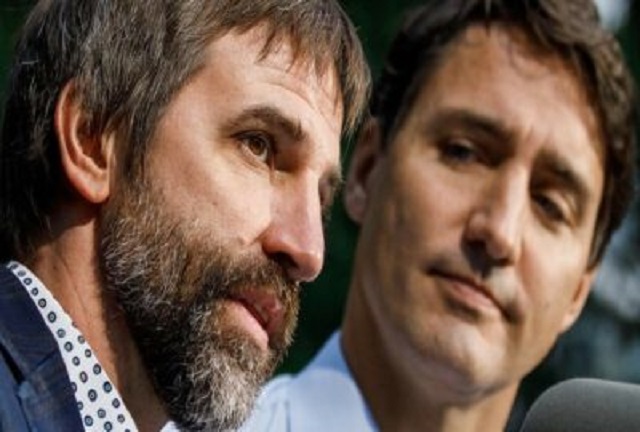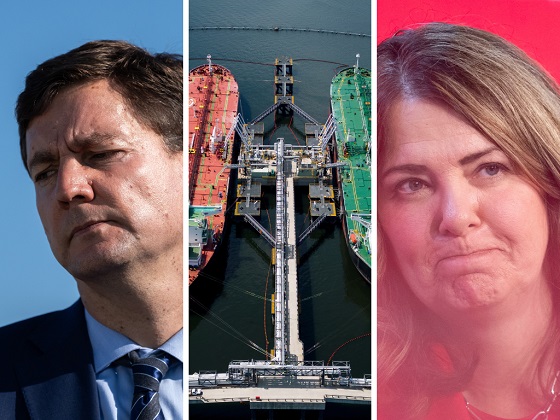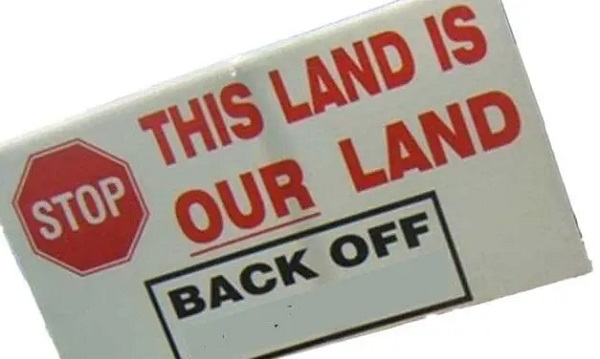Energy
Why Eastern Canada Needs to Support Western Provinces and Reject the Government’s Energy Policies

From EnergyNow.ca
By Catherine Swift
There are currently about 400 different laws, regulations, taxes and other measures in Canada that serve as greenhouse gas (GHG) reduction measures. No one has a clue which of them are effective or useless or how much they are damaging our economy and reducing Canadians’ standard of living needlessly.
Alberta
New pipeline from Alberta would benefit all Canadians—despite claims from B.C. premier

From the Fraser Institute
The pending Memorandum of Understanding between the Carney government and the Alberta governments will reportedly support a new oil pipeline from Alberta’s oilsands to British Columbia’s tidewater. But B.C. Premier David Eby continues his increasingly strident—and factually challenged—opposition to the whole idea.
Eby’s arguments against a new pipeline are simply illogical and technically incorrect.
First, he argues that any pipeline would pose unmitigated risks to B.C.’s coastal environment, but this is wrong for several reasons. The history of oil transport off of Canada’s coasts is one of incredible safety, whether of Canadian or foreign origin, long predating federal Bill C-48’s tanker ban. New pipelines and additional transport of oil from (and along) B.C. coastal waters is likely very low environmental risk. In the meantime, a regular stream of oil tankers and large fuel-capacity ships have been cruising up and down the B.C. coast between Alaska and U.S. west coast ports for decades with great safety records.
Next, Eby argues that B.C.’s First Nations people oppose any such pipeline and will torpedo energy projects in B.C. But in reality, based on the history of the recently completed Trans Mountain Expansion (TMX) pipeline, First Nations opposition is quite contingent. The TMX project had signed 43 mutual benefit/participation agreements with Indigenous groups along its route by 2018, 33 of which were in B.C. As of March 2023, the project had signed agreements with 81 out of 129 Indigenous community groups along the route worth $657 million, and the project had resulted in more than $4.8 billion in contracts with Indigenous businesses.
Back in 2019, another proposed energy project garnered serious interest among First Nations groups. The First Nations-proposed Eagle Spirit Energy Corridor, aimed to connect Alberta’s oilpatch to a port in Kitimat, B.C. (and ultimately overseas markets) had the buy-in of 35 First Nations groups along the proposed corridor, with equity-sharing agreements floated with 400 others. Energy Spirit, unfortunately, died in regulatory strangulation in the Trudeau government’s revised environmental assessment process, and with the passage of the B.C. tanker ban.
Premier Eby is perfectly free to opine and oppose the very thought of oil pipelines crossing B.C. But the Supreme Court of Canada has already ruled in a case about the TMX pipeline that B.C. does not have the authority to block infrastructure of national importance such as pipelines.
And it’s unreasonable and corrosive to public policy in Canada for leading government figures to adopt positions on important elements of public policy that are simply false, in blatant contradiction to recorded history and fact. Fact—if the energy industry is allowed to move oil reserves to markets other than the United States, this would be in the economic interest of all Canadians including those in B.C.
It must be repeated. Premier Eby’s objections to another Alberta pipeline are rooted in fallacy, not fact, and should be discounted by the federal government as it plans an agreement that would enable a project of national importance.
Carbon Tax
Carney fails to undo Trudeau’s devastating energy policies

From the Fraser Institute
By Tegan Hill and Elmira Aliakbari
On the campaign trail and after he became prime minister, Mark Carney has repeatedly promised to make Canada an “energy superpower.” But, as evidenced by its first budget, the Carney government has simply reaffirmed the failed plans of the past decade and embraced the damaging energy policies of the Trudeau government.
First, consider the Trudeau government’s policy legacy. There’s Bill C-69 (the “no pipelines act”), the new electricity regulations (which aim to phase out natural gas as a power source starting this year), Bill C-48 (which bans large oil tankers off British Columbia’s northern coast and limit Canadian exports to international markets), the cap on emissions only from the oil and gas sector (even though greenhouse gas emissions have the same effect on the environment regardless of the source), stricter regulations for methane emissions (again, impacting the oil and gas sector), and numerous “net-zero” policies.
According to a recent analysis, fully implementing these measures under Trudeau government’s emissions reduction plan would result in 164,000 job losses and shrink Canada’s economic output by 6.2 per cent by the end of the decade compared to a scenario where we don’t have these policies in effect. For Canadian workers, this will mean losing $6,700 (annually, on average) by 2030.
Unfortunately, the Carney government’s budget offers no retreat from these damaging policies. While Carney scrapped the consumer carbon tax, he plans to “strengthen” the carbon tax on industrial emitters and the cost will be passed along to everyday Canadians—so the carbon tax will still cost you, it just won’t be visible.
There’s also been a lot of buzz over the possible removal of the oil and gas emissions cap. But to be clear, the budget reads: “Effective carbon markets, enhanced oil and gas methane regulations, and the deployment at scale of technologies such as carbon capture and storage would create the circumstances whereby the oil and gas emissions cap would no longer be required as it would have marginal value in reducing emissions.” Put simply, the cap remains in place, and based on the budget, the government has no real plans to remove it.
Again, the cap singles out one source (the oil and gas sector) of carbon emissions, even when reducing emissions in other sectors may come at a lower cost. For example, suppose it costs $100 to reduce a tonne of emissions from the oil and gas sector, but in another sector, it costs only $25 a tonne. Why force emissions reductions in a single sector that may come at a higher cost? An emission is an emission regardless of were it comes from. Moreover, like all these policies, the cap will likely shrink the Canadian economy. According to a 2024 Deloitte study, from 2030 to 2040, the cap will shrink the Canadian economy (measured by inflation-adjusted GDP) by $280 billion, and result in lower wages, job losses and a decline in tax revenue.
At the same time, the Carney government plans to continue to throw money at a range of “green” spending and tax initiatives. But since 2014, the combined spending and forgone revenue (due to tax credits, etc.) by Ottawa and provincial governments in Ontario, Quebec, British Columbia and Alberta totals at least $158 billion to promote the so-called “green economy.” Yet despite this massive spending, the green sector’s contribution to Canada’s economy has barely changed, from 3.1 per cent of Canada’s economic output in 2014 to 3.6 per cent in 2023.
In his first budget, Prime Minister Carney largely stuck to the Trudeau government playbook on energy and climate policy. Ottawa will continue to funnel taxpayer dollars to the “green economy” while restricting the oil and gas sector and hamstringing Canada’s economic potential. So much for becoming an energy superpower.
-

 Alberta2 days ago
Alberta2 days agoPremier Smith explains how private clinics will be introduced in Alberta
-

 Alberta2 days ago
Alberta2 days agoAlberta introducing dual practice health care model to increase options and shorten wait times while promising protection for publicly funded services
-

 Business2 days ago
Business2 days agoUS Supreme Court may end ‘emergency’ tariffs, but that won’t stop the President
-

 Aristotle Foundation2 days ago
Aristotle Foundation2 days agoWe’re all “settlers”
-

 Indigenous1 day ago
Indigenous1 day agoIndigenous activist wins landmark court ruling for financial transparency
-

 International2 days ago
International2 days ago“The Largest Funder of Al-Shabaab Is the Minnesota Taxpayer”
-

 Alberta1 day ago
Alberta1 day agoRed Deer’s Jason Stephan calls for citizen-led referendum on late-term abortion ban in Alberta
-

 espionage1 day ago
espionage1 day agoSoros family has been working with State Department for 50 years, WikiLeaks shows


The federal Liberal government’s approach to energy policy has created problematic regional divisions across Canada. It’s time for the East to reject these crass politics and show greater support for the West.
Two recent court decisions — one at the Supreme Court and another at the Federal Court — have ruled against the federal government with respect to the Impact Assessment Act (the “No More Pipelines Bill”) and the single-use plastics ban. The courts found these laws to be unconstitutional as the federal government had intruded on provincial jurisdiction, among some other considerations such as the absurdity of declaring plastics “toxic.”
Around the same time, Environment Minister Steven Guilbeault announced a punitive new emissions cap on the oil and gas industry at COP28, which was also attended by Alberta Premier Danielle Smith and Saskatchewan Premier Scott Moe. This was seemingly timed to embarrass Guilbeault’s provincial counterparts and the Canadian oil and gas executives in attendance.
Back in October, Prime Minister Justin Trudeau announced a three-year exemption for home heating oil from the carbon tax. As heating oil is only used extensively in the Atlantic provinces, this was clearly an attempt to win back sharply declining Liberal support in that region. After Liberals claimed the carbon tax must be applied everywhere — in every industry and every region — this move served as a complete refutation of everything the Liberals had said before. It completely undermined their rationale for the carbon tax.
Meanwhile, countries around the world such as the United Kingdom and much of the European Union have been abandoning or significantly watering down their “net-zero” plans. Auto manufacturers are backing off production of electric vehicles (EVs) as they are not selling and all the lofty goals of the climate-crisis crowd are being questioned, as it has become clear the impact of these policies is hugely damaging to the economy and our standard of living.
For the trillions of dollars spent around the globe to attain the elusive net-zero target, very little has been achieved other than negative impacts on average citizens. Meanwhile, an elite class of “green” activists and government officials travel around the world first-class on the taxpayers’ dime, spewing much carbon in the process.
There are currently about 400 different laws, regulations, taxes and other measures in Canada that serve as greenhouse gas (GHG) reduction measures. No one has a clue which of them are effective or useless or how much they are damaging our economy and reducing Canadians’ standard of living needlessly. This is because the Trudeau government never evaluates the effectiveness of its policies.
The Liberals first sold us the carbon tax as the only measure needed to reduce GHGs, arguing it was a market-based mechanism that would motivate consumers and businesses to make their own sensible decisions to reduce fossil fuel usage. We were also told by former environment minister Catherine McKenna the carbon tax would never exceed $50 a tonne, which we now know was just one of many Liberal bald-faced lies as the tax is slated to increase to at least $170/tonne by 2030.
Despite dishonest claims the carbon tax was the only measure needed, we have subsequently seen the so-called Clean Fuel Standard, the absurdly red-tape intensive Impact Assessment Act (which the Supreme Court has now overthrown), and Guilbeault’s recent emissions cap.
Interestingly, other parts of the economy emit similar amounts of GHGs as the oil and gas sector, but those industries are not subject to an emissions cap. Could it be because those industries are located in regions that tend to vote Liberal, unlike Alberta and Saskatchewan? Perish the thought!
Throughout all of the climate policy overkill, the provinces of Alberta and Saskatchewan have remained steadfast in opposing foolish federal government initiatives based on facts, science and constitutional law. All Canadians should know that Alberta in particular is a disproportionately significant contributor to the rest of Canada in many ways — equalization payments, contributions to programs such as CPP and Employment Insurance as well as personal and corporate taxation and royalty revenue from the oil and gas industry.
It was truly ironic that, in the context of the federal budget earlier this year, Finance Minister Chrystia Freeland boasted that government revenues had come in higher than forecast. Yet the key source for this excess revenue was the oil and gas sector the Liberals are working hard to kill.
Alberta and Saskatchewan have been doing yeoman’s work defending the jurisdictional rights of all provinces and opposing the costly and unproductive federal government policies. At the same time, their success is boosting the economy of the whole country.
While Trudeau plays his destructive and divisive regional games — putting in place policies that benefit some parts of Canada while punishing others — all in the name of Liberal votes, the whole of Canada should call his bluff and support the leadership role that is being taken by the Prairie provinces.
The next federal election would be an ideal time to demonstrate that support.
Catherine Swift is president of the Coalition of Concerned Manufacturers and Businesses of Canada